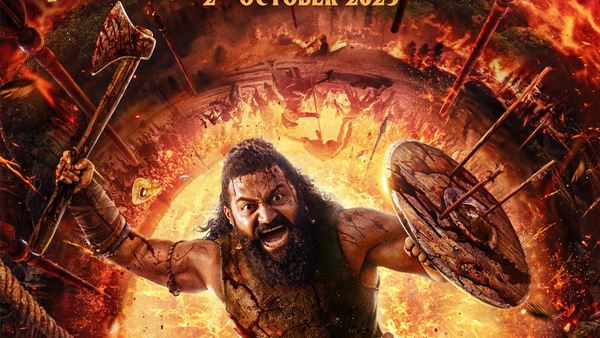‘Kantara: Chapter 2’ Review: A Prequel That Magnifies the Original’s Cultural Impact
Occasionally, a film leaves you utterly speechless. Sometimes its impact is so profound that words fail you. Other times, you are so moved that you can’t stop talking about it. And sometimes, a movie simply touches your soul, immersing you in its magical world.
But when a film manages to do all of this simultaneously, it ceases to be merely a masterpiece—it becomes a cultural phenomenon. Rishab Shetty’s ‘Kantara: Chapter 1’ leaves precisely this indelible mark.
A Tale of Greed, Gods, and Tribal Struggle
The film begins by plunging into the story of the Kadamba dynasty and its ruthless ruler, whose insatiable greed demands the conquest of all land and water, showing no mercy to man, woman, or child.
On one such campaign, the ruler encounters a mysterious old man fishing by the sea and orders his soldiers to seize him. As they drag him away, precious artifacts spill from his sack. The ruler, captivated by the treasures, sets out to discover their source. This journey leads him to Kantara, a land where tribes live in harmony with nature. His ambition meets its true challenge when he fixes his gaze upon Eshwara Pundottam, a sacred space protected by a divine power.
The narrative fast-forwards many years to Vijayendra (played by Jayaram), the King of Bhangra. After a long reign, his son, Kulashekhara (Gulshan Devaiah), ascends the throne, while his daughter, Kanakavathi (Rukmini Vasanth), takes charge of the treasury.
Meanwhile, Barme (Rishab Shetty), the leader of the Kantara village, strives to develop the community and improve the lives of his people. When the people of Kantara arrive in Bhangra, the situation escalates into a fierce struggle over the ownership, protection, and threatened destruction of the land.
Cinema That Takes Your Breath Away
If the 2022 film Kantara held you captive, this prequel intensifies that experience tenfold. From the moment the film opens with the atmospheric narration setting the stage for the Kadamba and Bhangra dynasties and the tribes, you are consumed by its world.
Every scene is crafted with meticulous detail. The film tackles themes of oppression, equity, and exploitation with profound sensitivity. A scene involving the chariot and horses, driven by the Kantara tribe—who are treated as untouchables—is so raw and powerful it’s impossible to look away.
The first half of the film is relentlessly gripping. Whether it’s the chariot and horse chase sequence or the jungle fight just before the intermission, the filmmaking is at its absolute peak. Rishab Shetty’s passion and dedication shine through in every single frame.
Layered Conflict and Stellar Performances
As the story shifts to the Bhangra kingdom and the dissolute King Kulashekhara, another tribe is introduced, deepening the narrative. The conflict transcends a simple rich vs. poor dynamic, revealing internal power struggles and a fight between good and evil even within the tribal communities.
The chilling Guliga scream from Kantara is even more impactful here. Rishab Shetty, as Barme, expresses complex emotions through a variety of guttural cries that consistently send shivers down your spine.
While Rishab Shetty is the pillar of the film, Rukmini Vasanth (Kanakavathi) provides strong support. Her character is formidable, and her performance is outstanding. Jayaram adds depth with his seasoned acting, and Gulshan Devaiah’s portrayal of the incompetent king is so effective that his very presence is unsettling—a testament to his success in the role.
Technical Brilliance and Lasting Impact
The greatest strength of Kantara: Chapter 1 is its layered and symbolic storytelling, which compels you to think and completely hooks the viewer. Beyond the compelling narrative and acting, the film excels technically. Arvind S. Kashyap’s cinematography, Ajaneesh Loknath’s music, and the visual effects are spectacular.
Compared to the original Kantara, the prequel features grander cinematic visuals, but they never overshadow the core story. Though some graphics in the second half feel slightly weak, this is a minor flaw. The film’s climax and the Guliga sequences are instantly rewatchable. In these moments, Rishab Shetty truly embodies a force of nature.
With such powerful imagery and a profound story, it’s easy to fall in love with the world of Kantara. For this reason, ‘Kantara: Chapter 1’ is destined to be counted among the year’s best films.
